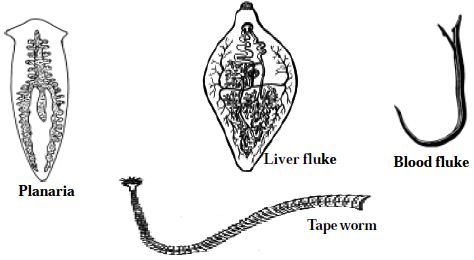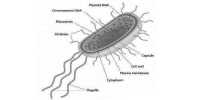Platyhelminthes phylum includes flatworms. These are acoelomates, without a body cavity called coelom. The alimentary canal is either absent or very simple. Excretion and osmoregulation occur through flame cells.These worms are mostly hermophrodites, having both male and female reproductive organs in a single individual. Most of the members are parasites. It is divided into three classes, namely Turbellaria, Trematoda and Cestoda.
Class Turbellaria:- These are free living aquatic flatworms. The Planaria of this class shows characteristic regeneration.
Class Trematoda :- These are flukes living as parasites inside a host (en-doparasites). A protective cuticle covers the outer surface of the body. Flukes have suckers for attachment to the host tissues. The examples are Fasciola (liver fluke), Schistosoma (blood fluke).

Class Cestoda:- It includes all tape worms. These are internal parasites with a complex life history. The life cycle involves two hosts.
Their body characters are adaptations for parasitic life. Mouth and alimentary canal are absent. Food is absorbed through general body surface. The head is called the scolex. It has a ring of hooks and suckers for attach-ment to the host tissue. The body consists of several segments called Proglottids. (eg) sheep and cattle tape worms.













